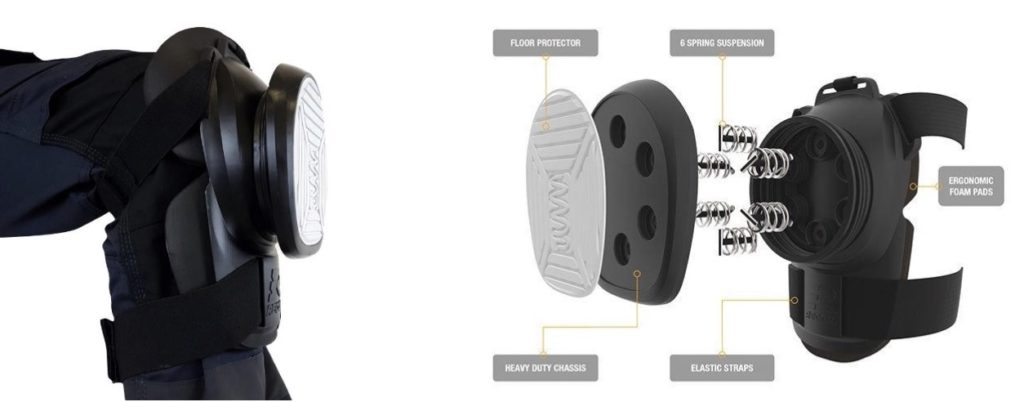You never know what in a day will make your day a great one. Recently, I had on my calendar a meeting with Vicky Hamilton from Scotland Can Do Scale Summer School. It is always fun to see Scottish entrepreneurs, especially after this program because they really treasure the workshop and then go out and work hard to put the concepts to work.
Vicky was in Boston as part of a US state department program at the moment called the Young Transatlantic Innovation Leaders Initiative (YTILI). If you know me well, you know I have a deep skepticism of government programs with fancy names like this. But heck, Vicky was great and she was a Strathclyde and Scale alumnus so I was looking forward to seeing her but to be honest, my expectations were not high. It was going to be a better meeting than I anticipated.
When the meeting with Vicky started, she told me how much better her business was doing now since Scale. “How specifically?” I asked. What followed is a great case study that I will use in future classes and workshops because it is so easy to understand and is so compelling.
To make a long story short, her business was now growing much faster and much more profitably since she started showing more discipline about who her customer was. Her business is a simple product, kneepads with springs in them so that when you have to kneel down on the ground, not only you are less likely to get hurt but you also are much more productive. Here are illustrations of the product.
 Recoil Kneepads – www.recoilkneepads.com
Recoil Kneepads – www.recoilkneepads.com
It is an unsophisticated product with a seemingly straightforward value proposition. Vicky had launched the company out of a project at Strathclyde University (great entrepreneurship program there) and was immediately getting sales. What more did she need to learn? People were buying her product on Amazon.
What did the Disciplined Entrepreneurship approach do to help? She had been selling to whoever would buy them. The kneepads cost in the neighborhood of $85 for one pair. As mentioned above, one initially favored channel was Amazon because they could sell directly. This could also be Kickstarter or other crowdfunding/sales sites for new products which I always caution people on. They might be good but understand first the risks. To understand that, you have to know well who your customer is.
What happened with Recoil Kneepad? They got a lot of DIY (i.e., Do It Yourself) customers who might get the product to work on a project on the weekend where they bought their other supplies at a place like Home Depot.
For this customer, the hundred dollar price point was a high one and if they only worked on an occasional project for a few hours on a weekend they would not get as strong a value proposition as a professional tradesperson (e.g., carpenter, tiler, plumber, etc.). A professional tradesperson could get tens of hours in a week of use out of the product. The tradesperson also has more concrete benefits to doing this because they were in a competitive business where things came down to dollars and cents much more so than a DIY customer.
So the willingness and satisfaction of the professional tradesperson was much higher. The DIY customer was Vicky’s Volvo in the Lamborghini and Volvo story I tell to start off my workshops and courses. It was a distraction and you much focus on one beachhead market at the beginning. Vicky bought into this and then started to test it to see if it made sense in the real world beyond the classroom lectures.
Low and behold, the DIY customer put more pressure for a discount and also wrote terrible reviews on Amazon. Terrible reviews are incredibly damaging to a business as Professor Sinan Aral of MIT Sloan has shown in his research. The discounting of pricing also directly and dramatically decreased profit margins.
Another interesting take away that Vicky got from the Scale Summer School and her work at Strathclyde was to watch the cost of customer acquisition (CoCA – Step 19 in the 24 Steps). She saw that if she focused on the tradespeople market, she could drive her CoCA down five times rather than if she staid generic.
So in summary, when she focused on tradespeople and did not pursue nor accept the DIY customers, she saw her LTV go up (because of less discounting), her CoCA go down, her customer NPS (Net Promoter Score – a standard way to measure customer satisfaction) go up and her joy in the business went up as well.
This was a very simple and easy to understand product. It shows clearly and specifically why it is a sound business decision to put your focus on a specific market segment (in this case tradespeople) and turn away the metaphorical Volvo (the distracting DIY) market.
Sometimes those great moments in the day come when you don’t expect and having this great case study fall on my lap was one of them. Thanks so much for sharing, Vicky!
The author
Bill Aulet
A longtime successful entrepreneur, Bill is the Managing Director of the Martin Trust Center for MIT Entrepreneurship and Professor of the Practice at the MIT Sloan School of Management. He is changing the way entrepreneurship is understood, taught, and practiced around the world.

The Disciplined Entrepreneurship Toolbox
Stay ahead by using the 24 steps together with your team, mentors, and investors.
The books
This methodology with 24 steps and 15 tactics was created at MIT to help you translate your technology or idea into innovative new products. The books were designed for first-time and repeat entrepreneurs so that they can build great ventures.

How relevant was this article to you?
Click on a star to rate it!
Average rating 5 / 5. Vote count: 4
No votes so far! Be the first to rate this post.
We are sorry that this article was not useful for you!
Let us improve this post!
Tell us how we can improve this post?
 Image courtesy of Adam Gordon
Image courtesy of Adam Gordon